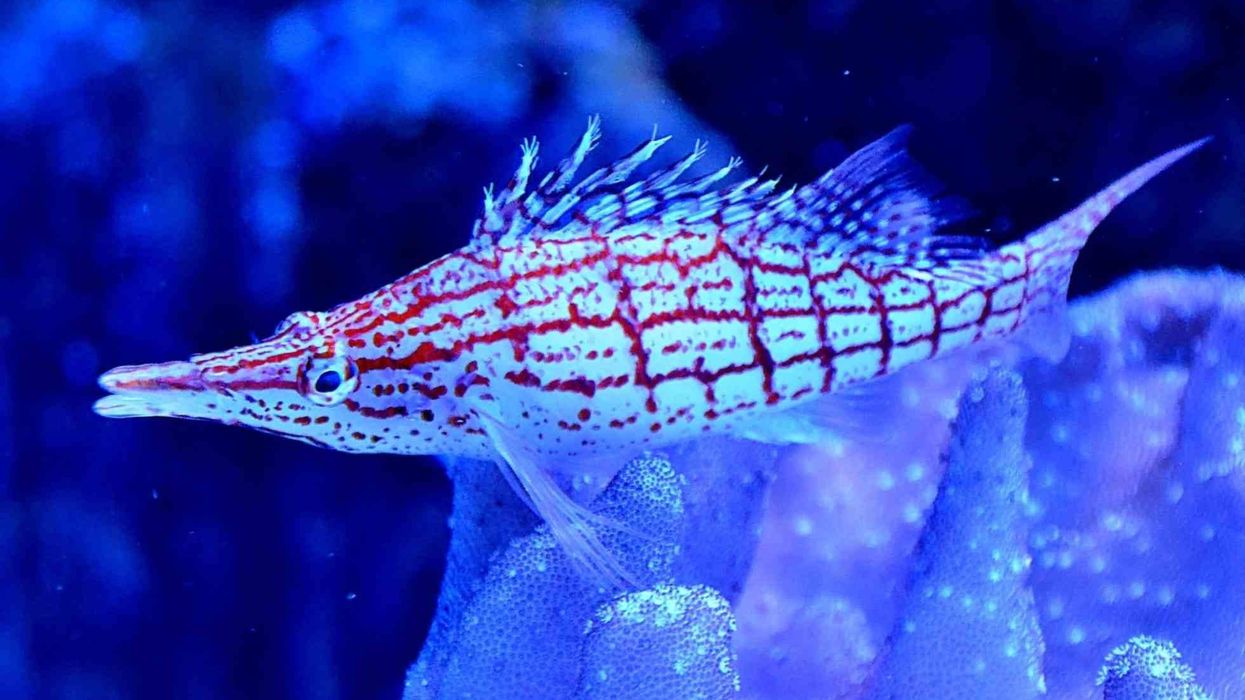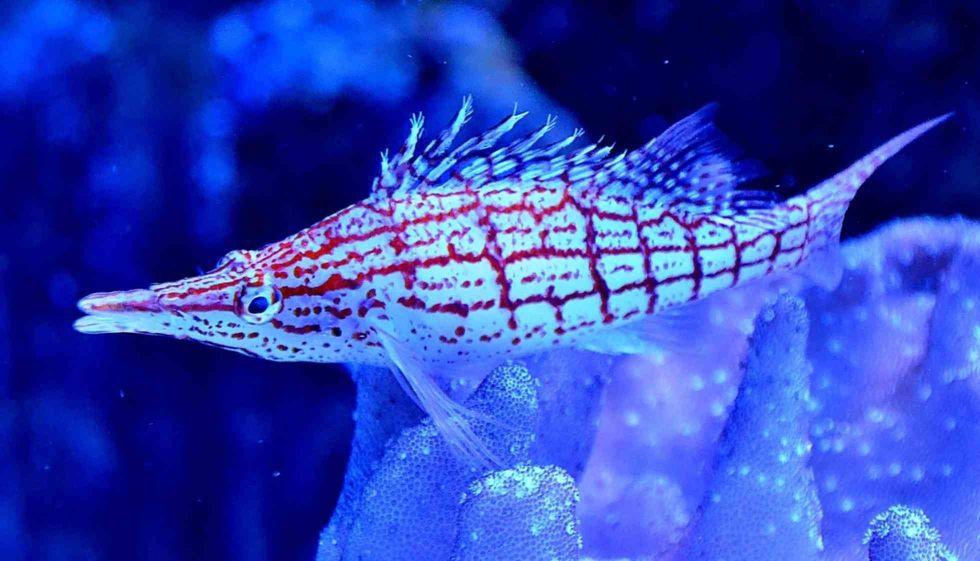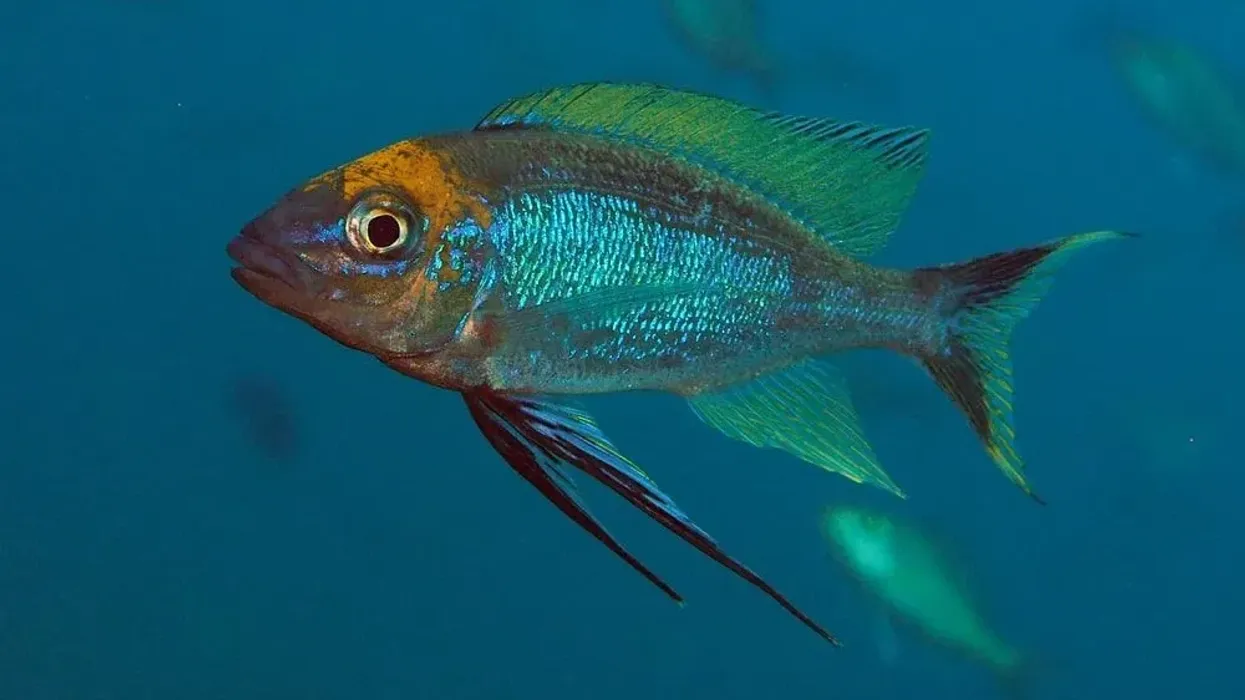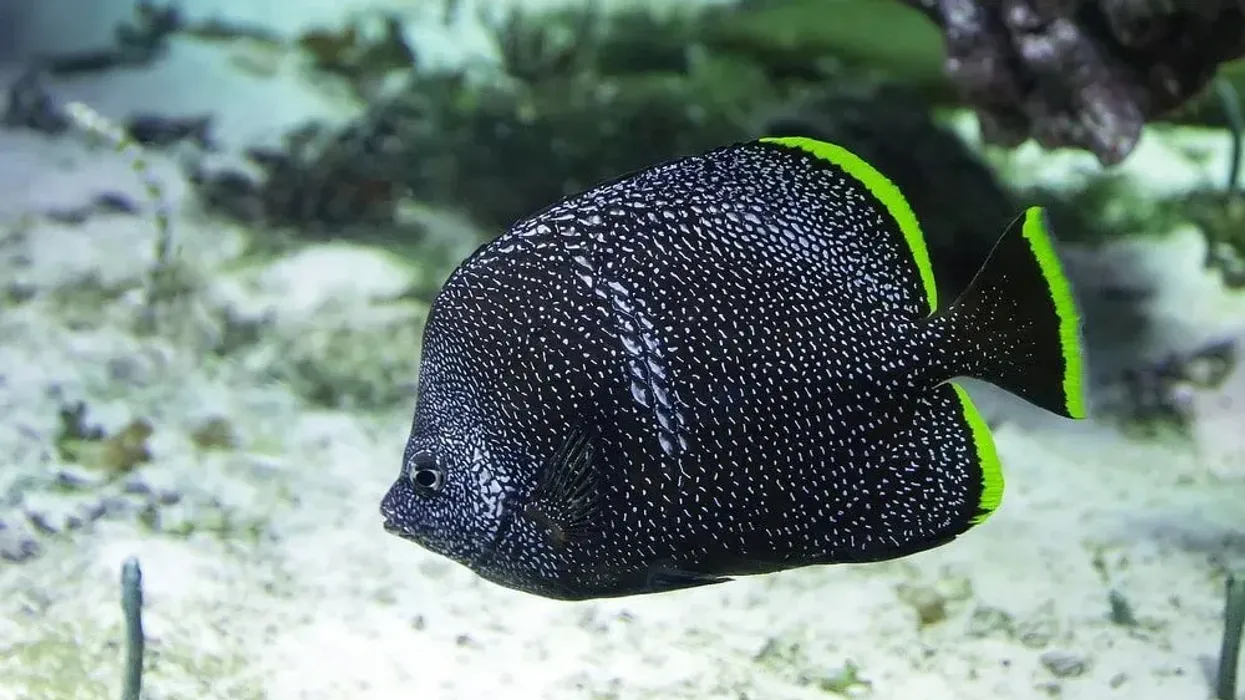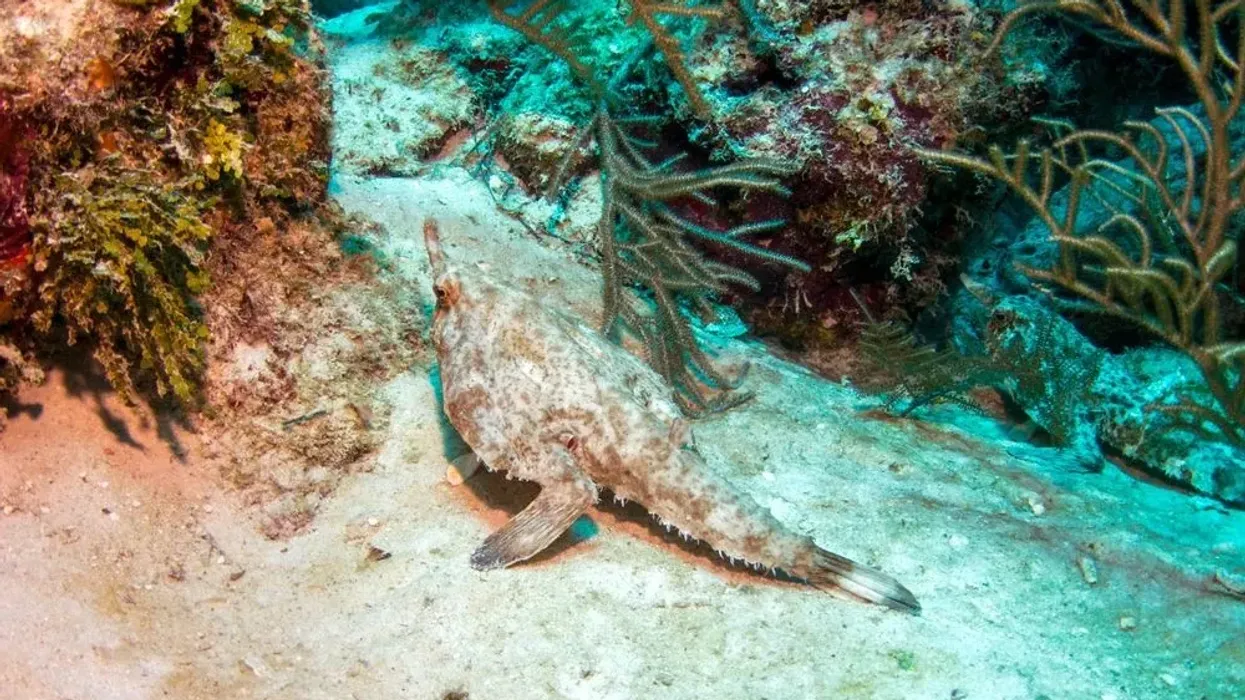People have always had an affinity towards patterned fishes. One such fish is the longnose hawkfish (Oxycirrhites typus) which has a beautiful orangish-red and white plaid pattern.
The unique patterned look and its long nose have made this tropical fish popular among collectors. Like other hawkfishes, the dorsal fins of this fish have spines that have hair-like tufts known as cirri. However, an unusual characteristic of this fish is its lack of a swim bladder.
Found in the Indo-Pacific tropical region, this fish has an affinity to perch on top of corals or rocks. The fish lives around reefs formed of gorgonians (fan corals) and black corals in their natural habitat.
The slender nose-like mouth of this fish helps it to catch its prey without fail. This fish species can be kept in a tank, but the tank size needs to be big and appropriate. Taking care of this fish, as well as breeding it, is pretty easy.
Want to learn more about this fish? Keep on reading to find out interesting longnose hawkfish facts. Also, check out the articles on milkfish facts and green sunfish facts to know more about captivating animals.
Longnose Hawkfish Interesting Facts
What type of animal is a longnose hawkfish?
The longnose hawkfish is a colorful small-sized fish found in the reefs of Indo-Pacific Oceans.
What class of animal does a longnose hawkfish belong to?
The longnose hawkfish belongs to the class Actinopterygii and the genus Oxycirrhites.
How many longnose hawkfish are there in the world?
Not many studies have been done on the exact population of this fish species.
Where does a longnose hawkfish live?
The longnose hawkfish is extant in the Indian and Pacific Oceans. It belongs to the tropical reefs present in these oceans.
Populations of longnose hawkfish are common in South Africa, near New Caledonia, as well as the eastern Pacific regions. As this fish is a part of the exotic pet trade, you can also find it in manicured aquariums. The fish has also been spotted near Japan and the Hawaiian Islands.
What is a longnose hawkfish's habitat?
As the fish is present in two of the major Oceanic regions, you can guess that the longnose hawkfish lives in brackish water. Hence, it isn't a freshwater fish, and this should be kept in mind if you choose to keep it in a tank.
In its native environment, this fish species is known to house itself in the gorgonians (sea fans) and black corals.
However, it can also be present in the outer slopes of coral reefs. These fish like to perch; hence it is quite fond of rocky terrains even when kept in a tank.
Who do longnose hawkfish live with?
Not a lot is known about the living habits of the longnose hawkfish. This fish may live alone, or the male can stay with a group of seven females. However, it tends to be semi-aggressive and can bully other small fish. If you are planning to keep the longnose hawkfish, make sure to pick proper tankmates.
How long does a longnose hawkfish live?
The average longnose hawkfish lifespan is around 5-7 years.
How do they reproduce?
One interesting thing about the longnose hawkfish is that it is a synchronous hermaphrodite. These fish start as females and inverts into a male at a later stage.
Another interesting thing is the courtship dance performed by both the male and the female. Sexual dimorphism is seen in fish as the male fish is more colorful compared to the female fish.
Demersal (bottom sinking) eggs are laid by the female, and the eggs tend to stick with each other.
If you are thinking of breeding the longnose hawkfish in an aquarium, make sure to keep the two fishes under observation. The size of the aquarium needs to be at least 100 gallons or more to give both the fishes an ample amount of space.
What is their conservation status?
The longnose hawkfish isn't listed in any conservation list.
Longnose Hawkfish Fun Facts
What do longnose hawkfish look like?

Have you ever thought of seeing a fish with a plaid-patterned body? If not, then you must have a look at the longnose hawkfish because of its unique plaid-patterned appearance.
The orange or red lines, along with the contrasting white body, give this fish a remarkable appearance. This color comes in handy for the fish to camouflage itself in the corals. Like other hawkfishes, the longnose also has ten spines in the dorsal fins with soft and hard rays.
Cirri or hair-like structures are also found on the spines of the fins. Black edges are also seen on the fins of male fishes. In addition to that, truncated tail fins are also present in this fish.
This showstopper fish is mostly known for its long nose that resembles the mouth of a pair of needle-nose pliers. The long nose helps it to catch its prey without fail.
How cute are they?
These small plaid patterned fishes are adorable. This has led to this tropical fish being a favorite of aquarium enthusiasts.
How do they communicate?
Fishes mainly use gestures and motion as their way of communication. Some fishes may also release certain chemicals to communicate with others. However, we haven't found any communication traits that are unique to this fish.
How big is a longnose hawkfish?
The adult size of the longnose hawkfish is around 5 in (13 cm). This fish is certainly bigger than the coral hawkfishes that grow to an adult size of 3.9 in (10 cm). Both fishes belong to the same Cirrhitidae family and inhabit similar coral regions and waters.
How fast can a longnose hawkfish swim?
No data is available regarding the exact speed of these hawkfishes. However, this fish is quite serious about its diet, and it often perches on top of a rock, waiting for its prey to dash on it quickly.
The hawkfish family is named after this hawk-like preying characteristic. An organ called the swim bladder is missing in the longnose hawkfish, which is why you can often find this fish perched on rocks or corals in the depths of water.
How much does a longnose hawkfish weigh?
The average longnose hawkfish weight is yet to be studied.
What are the male and female names of the species?
There are no distinct names for the males and females of this fish species.
What would you call a baby longnose hawkfish?
A longnose hawkfish baby is called a fry.
What do they eat?
The fast-paced longnose hawkfish is known for feeding on free-swimming crustaceans. This species is known for perching on rocks and coral reef slopes to keep an eye on its prey.
The long snout allows it to catch the prey without any fail, even from the slimmest corners of the corals. Hermit crabs are one of the predominant crustaceans in the longnose hawkfish diet. When kept in a tank, the longnose hawkfish can be fed several things, including frozen and fresh foods.
Are they aggressive?
Yes, these fishes can be aggressive towards their species and also with any other fishes that might be kept with them. These fishes are territorial, and placing two fishes in close contact can lead to a fight.
It's always recommended to have a bigger tank size if you want to keep a school of fish. However, this small fish doesn't have that much power to harm a human being.
Would they make a good pet?
Yes, this small tropical fish do make a great pet mainly because of its bright and beautiful color.
Did you know...
The hair-like cirri on dorsal fins are common in most hawkfish species.
Apart from longnose hawkfish, sharks and rays also lack a swim bladder.
Are longnose hawkfish reefs safe?
These fishes are technically reef safe as it's used to live on different coral reefs in the native region. However, some longnose hawkfish care tips should be followed while placing artificial corals to create a reef in an aquarium.
Enough space and surface should be available in the aquarium for the fish to perch on. Make sure not to use prickly corals like Sea Anemones and Catalaphyllia in the aquarium or reef tanks.
Having Your Own Longnose Hawkfish
The longnose hawkfish is a sought-after tropical fish to be kept in a tank. Unfortunately, even though longnose hawkfish care is pretty simple, you can mess up things without following the proper tips.
One of the things to stay away from is to place the wrong tank mates. The suitable tank mates include dwarf angels, dotty backs, mid-sized wrasse, damselfishes, and butterflyfish.
The tank should have a temperature of around 72-80°F. This is a saltwater fish, so make sure to use suitable salts in the tank and maintain the tank pH level at 8.1-8.4.
Additionally, the hardness of the water in the tank should be maintained between 8-12. The diet of the hawkfish should be balanced, and it would be great if you can provide crustaceans.
Although, the fish can easily feed on commercial fish food or common live foods. You can feed it with cleaned shrimp, but it needs to be small in size.
Here at Kidadl, we have carefully created lots of interesting family-friendly animal facts for everyone to discover! For more relatable content, check out these longnose gar facts, and gar facts.
You can even occupy yourself at home by drawing one on our longnose hawkfish coloring pages.

